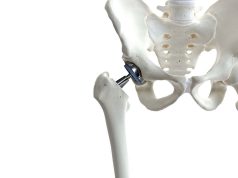Fifty percent decrease in oxidative stress; no change in inflammatory markers in subcutaneous tissue
FRIDAY, May 29, 2015 (HealthDay News) — Roux-en-Y gastric bypass (RYGB) surgery attenuates markers of oxidative stress in subcutaneous adipose tissue, according to a study published online May 22 in Diabetes.
X. Julia Xu, Ph.D., from the Boston University School of Medicine, and colleagues examined how AMP-activated protein kinase (AMPK) activity, oxidative stress, and inflammation are affected by RYGB surgery. Data were included from 11 patients who were examined immediately prior to and three months after surgery.
The researchers found that AMPK activity increased 3.5-fold after surgery, and oxidative stress declined by 50 percent in subcutaneous adipose tissue. There was an 80 percent reduction in malonyl-coA levels. Patients also had improvements in their body mass index, insulin sensitivity (measured by the homeostasis model assessment), and increased circulating high molecular weight adiponectin; there was also a reduction in fasting plasma insulin levels. Postoperatively, there was no change in the expression of inflammatory markers in subcutaneous tissue, but plasma C-reactive protein was reduced by 50 percent.
“Bariatric surgery has been demonstrated to attenuate markers of oxidative stress in liver and plasma,” the authors write. “The results of the present study indicate that it has a similar effect in subcutaneous adipose tissue.”
Copyright © 2015 HealthDay. All rights reserved.








